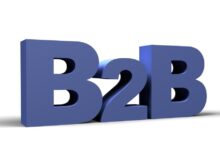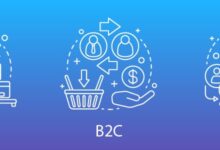B2B Business Secrets: 7 Proven Strategies for Explosive Growth
Ever wondered why some companies thrive by selling to other businesses? Welcome to the powerful world of B2B business, where relationships, strategy, and long-term value rule the game.
What Exactly Is a B2B Business?

The term B2B business, or business-to-business, refers to transactions between companies rather than between a company and individual consumers (which is B2C). This model powers global supply chains, tech integrations, and enterprise solutions that keep industries running smoothly.
Defining B2B vs. B2C
While B2C focuses on emotional appeal and quick purchases, a B2B business emphasizes logic, ROI, and long sales cycles. Decisions are made by committees, budgets are larger, and contracts are more complex.
- B2B: Multiple stakeholders, longer decision-making process, higher order values
- B2C: Individual buyers, instant gratification, lower price points
- Marketing tone: B2B is professional; B2C is emotional
“B2B is not just about selling products—it’s about solving business problems.” — Marc Benioff, CEO of Salesforce
Common Examples of B2B Models
From software-as-a-service (SaaS) platforms like HubSpot to industrial equipment suppliers like Siemens, B2B businesses operate across sectors. Think cloud computing providers, wholesale distributors, consulting firms, and payment processors like Stripe.
- Manufacturers selling raw materials to other manufacturers
- IT service providers offering cybersecurity to enterprises
- HR tech platforms automating recruitment for large corporations
Why B2B Business Is More Profitable Than You Think
Many assume B2C gets all the spotlight, but B2B generates significantly higher revenue per transaction. The average B2B deal size is 10x larger than B2C, making it a goldmine for scalable growth.
Higher Customer Lifetime Value (CLV)
In a typical B2B business, clients sign multi-year contracts with recurring revenue models. This leads to predictable income streams and stronger financial forecasting. For example, a SaaS company charging $10,000/month for enterprise software can generate $120,000 annually from just one client.
- Long-term contracts increase retention
- Upselling and cross-selling opportunities are abundant
- Customer acquisition cost (CAC) is offset over time
Stronger Relationships and Trust Building
Unlike B2C, where trust is fleeting, B2B thrives on deep, trust-based relationships. Sales cycles may take months, but once trust is established, clients often stay for years. Personalized service, dedicated account managers, and SLAs (Service Level Agreements) reinforce this bond.
- Regular check-ins and performance reviews build loyalty
- Custom solutions show commitment to client success
- Referrals from satisfied clients lead to new leads
The 7 Key Pillars of a Successful B2B Business
Building a thriving B2B business isn’t accidental—it’s strategic. Here are seven foundational pillars that separate average companies from market leaders.
1. Clear Value Proposition
Your value proposition must answer: “Why should another business buy from you?” It’s not enough to say you’re “reliable” or “affordable.” You need specificity. For instance, “We reduce logistics costs by 30% using AI-driven route optimization.” That’s measurable and compelling.
- Focus on outcomes, not features
- Highlight ROI and efficiency gains
- Use case studies to prove claims
2. Targeted Market Segmentation
Not all businesses are your customers. Effective segmentation identifies ideal client profiles (ICPs) based on industry, company size, revenue, tech stack, and pain points. Tools like LinkedIn Sales Navigator help pinpoint decision-makers in specific niches.
- Segment by vertical (e.g., healthcare, fintech)
- Use firmographic data (revenue, employee count)
- Map buyer personas for tailored messaging
3. Data-Driven Decision Making
In the world of B2B business, intuition doesn’t cut it. Top performers rely on analytics to track KPIs like customer acquisition cost (CAC), churn rate, and sales conversion. Platforms like Google Analytics, HubSpot, and Tableau turn raw data into actionable insights.
- Monitor lead-to-customer conversion rates
- Analyze customer behavior in product usage
- Optimize pricing models with A/B testing
How Digital Transformation Is Reshaping B2B Business
The digital revolution has transformed how B2B companies operate, sell, and engage. From e-commerce platforms to AI-powered sales tools, technology is no longer optional—it’s essential.
Rise of B2B E-Commerce Platforms
Gone are the days when B2B meant phone calls and paper catalogs. Today, companies like Grainger and Alibaba have built robust online marketplaces where businesses can browse, compare, and purchase products instantly. According to Forrester Research, B2B e-commerce in the U.S. will reach $2.5 trillion by 2027.
- Self-service portals improve buyer experience
- Automated reordering saves time and reduces errors
- Mobile accessibility allows purchasing on the go
AI and Automation in Sales & Marketing
Artificial intelligence is streamlining lead scoring, chatbot support, and personalized email campaigns. Tools like Drift and Outreach use AI to predict which leads are most likely to convert, allowing sales teams to focus their efforts efficiently.
- Chatbots handle initial inquiries 24/7
- Predictive analytics forecast customer needs
- Automated workflows reduce manual tasks
“AI won’t replace B2B salespeople—but salespeople who use AI will replace those who don’t.” — Jason Lemkin, SaaS Growth Expert
Mastering the B2B Sales Funnel: From Lead to Loyalty
The B2B sales funnel is longer and more complex than its B2C counterpart. Understanding each stage—awareness, consideration, decision, and retention—is critical for consistent growth in any B2B business.
Top of Funnel: Generating Awareness
This stage is about attracting potential clients who may not even know they have a problem you can solve. Content marketing, SEO, webinars, and social media (especially LinkedIn) play a crucial role here.
- Create educational blog posts and whitepapers
- Host industry-specific webinars with experts
- Run targeted LinkedIn ad campaigns
Middle of Funnel: Nurturing Leads
Once prospects are aware of their challenge, it’s time to nurture them with case studies, product demos, and comparison guides. Email drip campaigns and retargeting ads keep your brand top-of-mind.
- Send personalized follow-ups based on behavior
- Offer free trials or consultations
- Use CRM systems like Salesforce to track engagement
Bottom of Funnel: Closing the Deal
At this stage, prospects are evaluating vendors. Your job is to make the decision easy. Provide detailed proposals, ROI calculators, testimonials, and clear contract terms.
- Offer flexible pricing tiers
- Include implementation timelines
- Address objections proactively
Content Marketing: The Engine of B2B Growth
If there’s one strategy that consistently drives results in B2B business, it’s content marketing. Unlike flashy ads, content builds authority, trust, and organic visibility over time.
Types of High-Impact B2B Content
Not all content is created equal. The most effective formats for B2B audiences include in-depth guides, research reports, video explainers, and customer success stories.
- Whitepapers: Deep dives into industry challenges
- Case studies: Real-world proof of your solution’s impact
- Webinars: Interactive sessions that position you as an expert
SEO for B2B: Ranking Beyond Keywords
B2B SEO goes beyond stuffing keywords. It’s about answering the questions your ideal clients are asking. Use tools like Ahrefs or SEMrush to identify long-tail queries such as “best CRM for mid-sized manufacturing companies.”
- Optimize for intent, not just volume
- Build backlinks from industry publications
- Create pillar pages and topic clusters
“Content is king, but distribution is queen—and she runs the house.” — Jonathan Perelman, former VP of Digital at ICM Partners
Scaling Your B2B Business: From Startup to Enterprise
Scaling a B2B business requires more than just more customers. It demands systems, talent, and a scalable go-to-market strategy.
Building a Scalable Sales Team
As demand grows, so must your sales force. Implement a structured onboarding process, define clear KPIs, and invest in sales enablement tools like Gong (for call recording) and Chorus (for conversation intelligence).
- Hire specialized roles: SDRs, AEs, CSMs
- Use commission structures to incentivize performance
- Train reps on objection handling and negotiation
Expanding Into New Markets
Once you’ve mastered your home market, consider geographic or vertical expansion. For example, a software company serving U.S. retailers might expand into European logistics firms.
- Conduct market research before entering
- Adapt messaging to local regulations and culture
- Partner with local distributors or resellers
Leveraging Strategic Partnerships
Partnerships can accelerate growth faster than solo efforts. Integrating your product with complementary platforms (like Slack or Zoom) increases visibility and credibility.
- Join ecosystems like Microsoft AppSource or Salesforce AppExchange
- Create co-marketing campaigns with partners
- Develop referral programs with aligned vendors
What is the difference between B2B and B2C?
B2B involves businesses selling to other businesses, often with longer sales cycles, higher transaction values, and multiple decision-makers. B2C targets individual consumers with faster purchases driven by emotion and convenience.
How do I start a B2B business?
Start by identifying a niche problem businesses face, validate your solution with potential clients, build a minimum viable product (MVP), and create a go-to-market strategy focused on content, networking, and sales outreach.
What are the biggest challenges in B2B business?
Common challenges include long sales cycles, complex decision-making processes, high customer acquisition costs, and the need for continuous relationship management and post-sale support.
Which industries are best for B2B business?
Top industries include SaaS and technology, manufacturing, healthcare, logistics, financial services, and professional consulting—all of which rely heavily on inter-company collaboration and specialized solutions.
How important is customer service in B2B?
Extremely important. In B2B, customer service directly impacts retention, upsell opportunities, and brand reputation. Dedicated account managers, SLAs, and proactive support are standard expectations.
Running a successful B2B business isn’t about luck—it’s about strategy, persistence, and delivering real value. From defining your ideal customer to mastering the digital sales funnel, every step matters. The companies that thrive are those that invest in relationships, leverage data, and adapt to changing market demands. Whether you’re launching a startup or scaling an existing venture, the principles outlined here provide a roadmap for sustainable growth in the dynamic world of B2B.
Further Reading:








